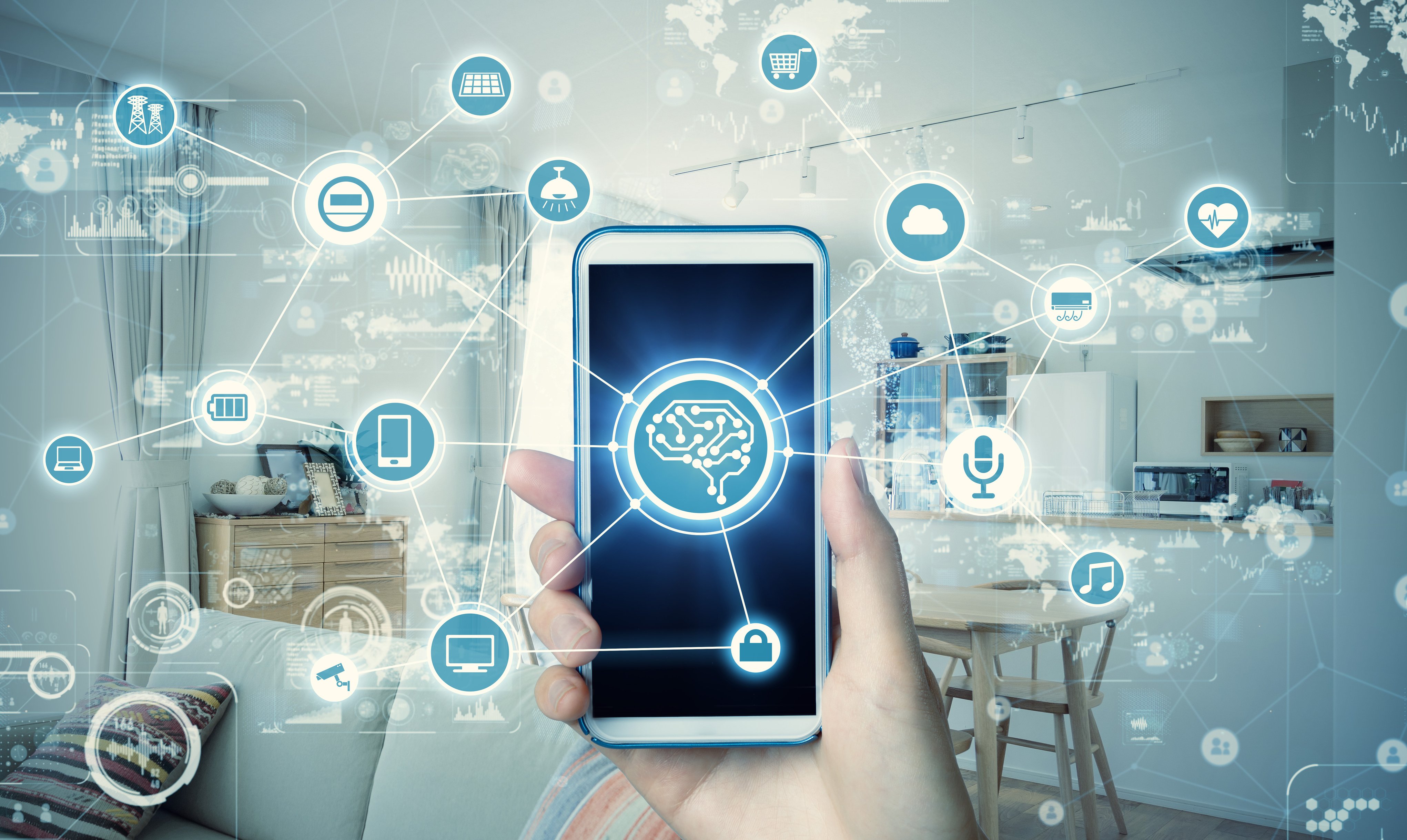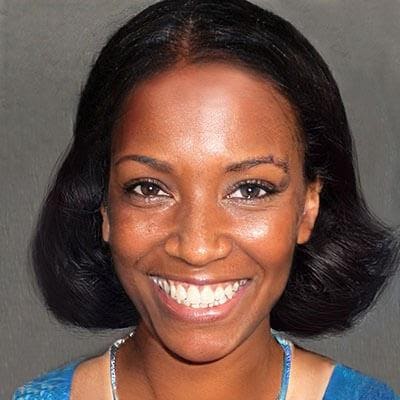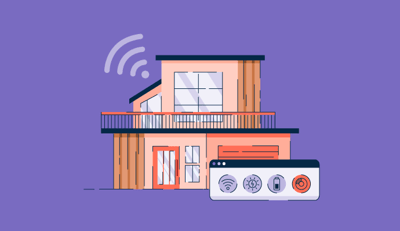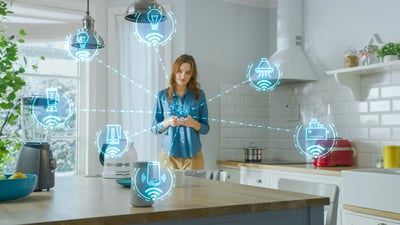
Today, the Internet of Things (IoT) is no longer an emerging trend but rather well established and continuing to rise.
IoT is now a part of every vertical and every niche with 21.5 billion devices forecasted to be connected by 2025. It has clearly marked a paradigm shift in the field of IT. From high-end industrial equipment to children’s toys, billions of devices are now connected to the internet and are sharing data to guide their actions.
Being a part of the internet dominated world, consumer demands are also shifting towards smart products. Look at smartwatches, robot vacuums, techy pet collars, smart trackers, and so on. We all expect our devices and ‘things’ to be able to connect to the network to perform intelligently and be accessible remotely. This greatly empowers the efficiency of our products.
The Internet of Things operates around a vast network. Various components are involved which work together to form a cohesive system. Based on collected data from connected products, autonomous actions are performed by the devices. Multiple entities involved in this entire process together to form the complex IoT ecosystem.
Understanding what is an IoT ecosystem, along with its various components, helps understand how the Internet of Things works.
There are two major components to the Internet of Things. The first is an object or a “thing” which you intend to make smart by providing connectivity. The other is the embedded system which provides this connectivity. While this may sound simple, the latter part actually involves a complex system which may consist of multiple sensors, actuators, protocols, data management layer and more. The interconnectivity of all these is responsible to make objects programmable, intelligent and capable of interacting with one another as well as humans.
Let’s take the example of a connected doorbell. To be able to detect that someone is at the door, even if the bell is not rung and to display this data in the form of video or voice to a user, involves multiple components. The detection needs to take place and the information needs to be sent, deciphered and communicated to the end-user. Moreover, opening the lock remotely also involves further involvement of the IoT ecosystem.
The IoT ecosystem is rapidly expanding and this makes it difficult to define. Every component that is involved in connecting businesses and users to their devices forms a part of this ecosystem. These can be visible components such as the user interface or the hardware, or also the software and processing components such as the network and storage.
Here are the main components based on which an internet of things ecosystem works on.
This is the first tier of an IoT ecosystem and it forms the backbone of the entire Internet of Things network. Data is indispensable for IoT and sensors are an important factor to ensure the accuracy and credibility of data. This essential layer consists of physical, micro appliances, embedded in an IoT device, which are responsible for collecting data or controlling a mechanism.
Sensors work to gather minute data from the surrounding environment. They are sometimes also known as ‘detectors’ as the primary function of sensors is to detect even the slightest changes in the surrounding environment. This allows an IoT device to capture relevant data for real-time or post-processing.
Depending on the type of sensor, this small piece of hardware can measure absolutely anything. This can be smoke, motion or even blood pressure. While advanced sensors can measure a range of complexities, some IoT devices have multiple sensors bundled to be able to collect a range of data or perform multiple functions. Our smartphones for example have GPS, fingerprint, camera, tilt, motion and numerous other sensors, all bundled in one.
Smart ACs or thermostats are able to sense room temperature and humidity levels at the same time. Depending on the device and use-case, different applications require different types of sensors.
Sensors are integral to achieve automation based on certain triggers. Considering the example of smart ACs, a person utilizing an automated mode function may set room temperature preferences between 73 and 77 degrees Fahrenheit. As soon as a room temperature higher than 77 degrees is detected the device will transmit a command to the air conditioning unit to operate at specified settings. As soon as a room is cooler than 73 degrees the change in temperature will be detected and a signal will be transmitted to the AC to turn off.
In the image below, an IoT-enabled smart AC controller is used to make a conventional air conditioner smart. It consists of a sensor which detects room temperature conditions along with a transmitter to send signals and receive a response. The entire IOT ecosystem is in play to guide automated actions.

Thanks to advancements in technology, today’s sensors are minute, smart and cheap! The selection of sensors depends on the purpose you wish to achieve. You may want the sensor to be able to detect motion, temperature, pressure, smoke or any other such trigger. The choice of sensors also depends on their accuracy, reliability of results, the range at which they should work, resolution and level of intelligence which in other words means their ability to deal with noise and interference.
Actuators work opposite to that of sensors. While sensors, sense; actuators act. They receive a signal or a command and on its basis they cause an action. They are as crucial as sensors as once the sensors have detected a change in the environment, an actuator is required to make something happen based on the trigger.
As an example, actuators may control the heating and cooling in a smart air conditioner or the valve in a smart tap. As soon as sensors detect that a person has exited an area, the actuator will be triggered to stop the flow of air conditioning or the flow of water in the case of a tap.
There are multiple types of actuators depending on the vertical and usage. They may be required to turn something on or off but they can also control valves and perform actions such as turning or gripping which has great beneficial value in industrial applications.
IoT is a network involving devices, sensors, cloud and actuators and all these needs to interconnect with one another to be able to decipher data and consequently perform an action. Connectivity forms the second piece of the puzzle in the complex world of the IoT ecosystem.
Once the data has been collected by the sensors, it requires a medium for transport. In other words, a communication channel is necessary between sensors and the cloud. IoT protocols are responsible for transferring data in the online world and this transmission can only be possible if two devices are safely connected. IoT standards and protocols involve an invisible language allowing physical objects to communicate with one another.
The choice of network depends on factors such as power consumption, speed of data transfer, range, bandwidth and overall efficiency. Some of the most popular IoT wireless protocols and standards include Bluetooth, Wi-Fi, ZigBee, LoRaWAN, DDS, MQTT, cellular, etc. These and other channels make it easy as well as secure to transfer and exchange data to the next IoT layer for processing.
Incoming, raw data from the sensors must pass through gateways to reach the cloud. Gateways translate network protocols ensuring seamless communication of all devices within the network. Essentially this makes the gateways a crucial communication point and is responsible for easy management of data traffic.
Moreover, gateways offer security by protecting the system from unauthorized access and malicious attacks. It can also be considered as a security layer as the data flowing through it protected by the latest encryption practices.
Gateways can also preprocess data from the sensors before sending it to the cloud. In other words they minimize the large volumes of data ‘sensed’ in the previous stage. Not all, but some intelligent IoT gateways have the ability to also analyze and average data to transfer only the relevant data to the cloud.
Once the data has been collected and it has traveled to the cloud, it needs to be processed. The cloud is where the “smart stuff” takes place! This high-performance facility majorly ties the components to the IoT ecosystem together. It handles the data, stores it and makes decisions to make or break a deal. All of this is performed for colossal amounts of data in just under milliseconds – the time is critical for IoT, as especially in critical concerns such as health and safety, latency cannot be compromised.
While the main purpose of IoT solutions is to provide and act on real-time information, there needs to be a component that is able to handle enormous amounts of data to cater to the time-sensitive nature of the IoT model. This is where cloud systems come into play. They form the brain of the IoT ecosystem as they are typically responsible for processing, commanding or taking analytics into account for the collected data. Devices, protocols, gateway and storage are combined for efficient real-time data analysis.
With their immense computing power, storage capabilities, networking options, analytics and other service components, clouds make information effectively available for the consumers.
While the cloud is not necessary for IoT, since local processing with Edge or Fog computing is an option too, the cloud may be preferred being a high-performance facility that offers massive scalability and decreased operational costs. Edge computing on the other hand is preferred when large amounts of data processing and storage are required on-premises.
Data may be a small word but it holds immense power that can pose a huge effect on any business. IoT Analytics is used to make sense of the vast amounts of analog data. This for example can include the determination of key performance indicators in a certain application where one may be interested in viewing errors or irregularities in real-time.
Once identified an immediate action would be required to prevent any undesirable scenarios. To put it differently, analytics involves converting raw data into useful insights that later are interpreted or analyzed to drive decision making.
Smart analytics is useful in multiple scenarios. The basic role is to analyze a situation and formulate a decision based on this. This can be basic such as analyzing if a room’s temperature falls in an acceptable range, or complex if for example a car is just about to crash. Data analytics helps determine vital business insights. Deep learning models can be used for predictive analysis. Various learnings can be derived from the data to predict trends, plan ahead and make useful business decisions.
Analytics requires storage power and intelligent computation to be able to make sense of any data. Tasks such as this can be hosted on the cloud, depending on the IoT architecture.
The user interface is the visible component that is easily accessible and in control of the IoT user. This is where a user can control the system and set their preferences. The more user-friendly this component of the IoT ecosystem is, the easier is a user’s interaction.
A user may interact with the system via the device itself, or this interaction can be conducted remotely via smartphones, tablets, and laptops. Smart home systems such as Amazon Alexa or Google Home etc. also allow users to communicate with their “things”.
Design is a major consideration in today’s fast-paced world and one IoT device can set itself apart from a competitor on the basis of a strong design. Touch interfaces, use of colors, font, voice, and more are some of the factors that come to play here. While an attractive design is necessary, the interface should be user-friendly enough to avoid any difficulties for the user.
It is exciting to watch the growth of IoT. This far from boring field is continuously developing further with time and is being introduced in various verticals spread over basic as well as critical use cases.
While IoT has greatly advanced throughout the years, the definition of the IoT ecosystem is an evolving field of study. The components of the system remain the same but the mechanisms differ depending on use cases, industry, and budget. The IoT ecosystem connects vendors and companies and furthermore makes solution planning simple for an efficient, reliable, and secure IoT system.
Use this information and IoT security software to ensure your IoT ecosystem maintains excellent reliability and safety.
Yamna Khan holds a Master’s Degree in International Management and Information Systems and has plenty of experience working in the IT sector. While digital marketing is her passion, she enjoys writing on smart tech and environment conservation.
3D printing has evolved significantly in recent years. Many businesses use 3D printers, with...
 by Sagar Joshi
by Sagar Joshi
Welcome to the era of the Internet of Things (IoT).
 by Sagar Joshi
by Sagar Joshi
IoT devices allow us to take internet connectivity wherever we go. There are thousands of...
 by Nahla Davies
by Nahla Davies
3D printing has evolved significantly in recent years. Many businesses use 3D printers, with...
 by Sagar Joshi
by Sagar Joshi
Welcome to the era of the Internet of Things (IoT).
 by Sagar Joshi
by Sagar Joshi


